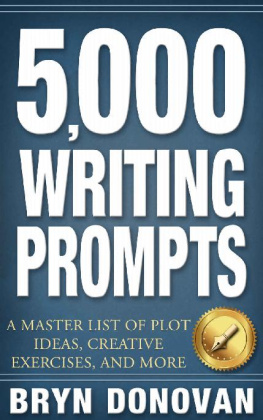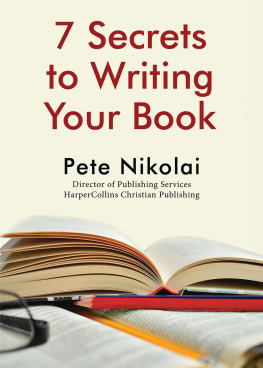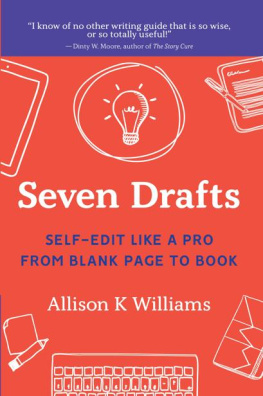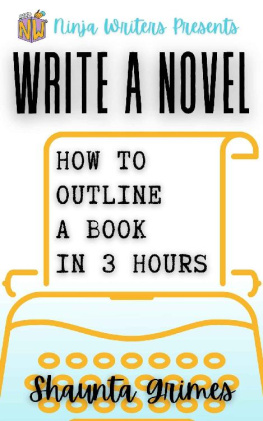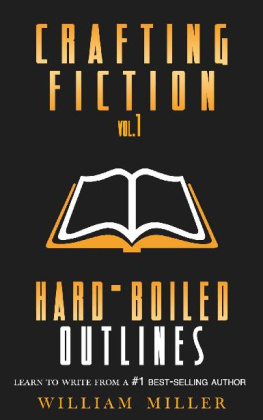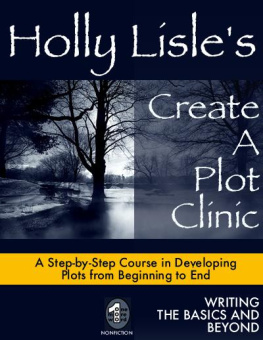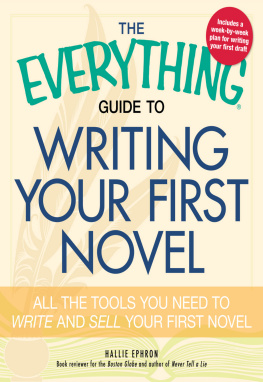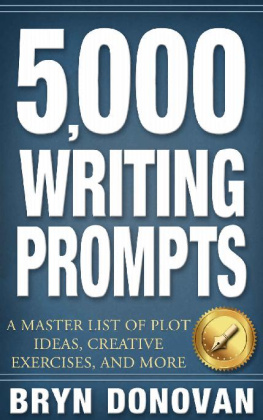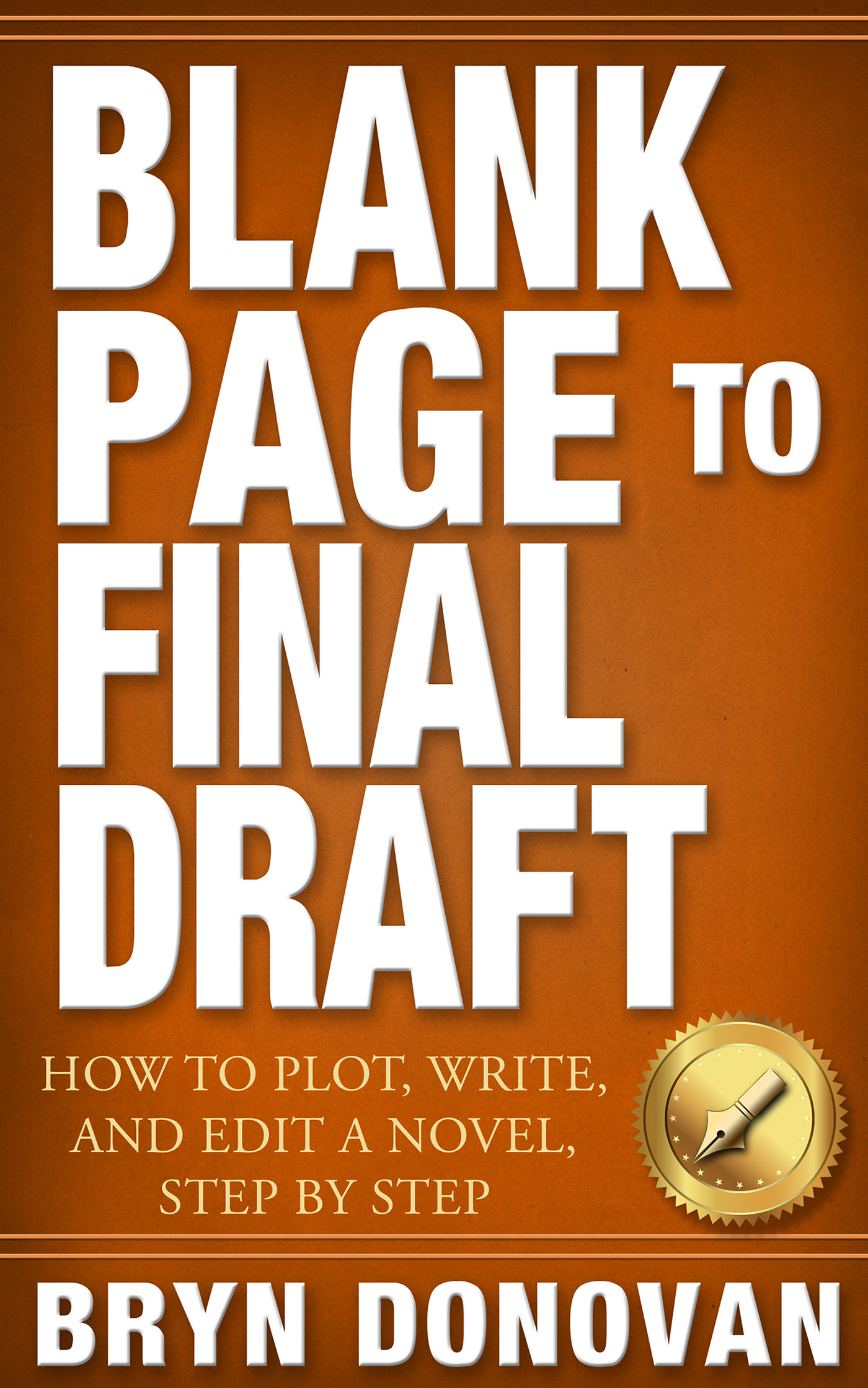Table of Contents
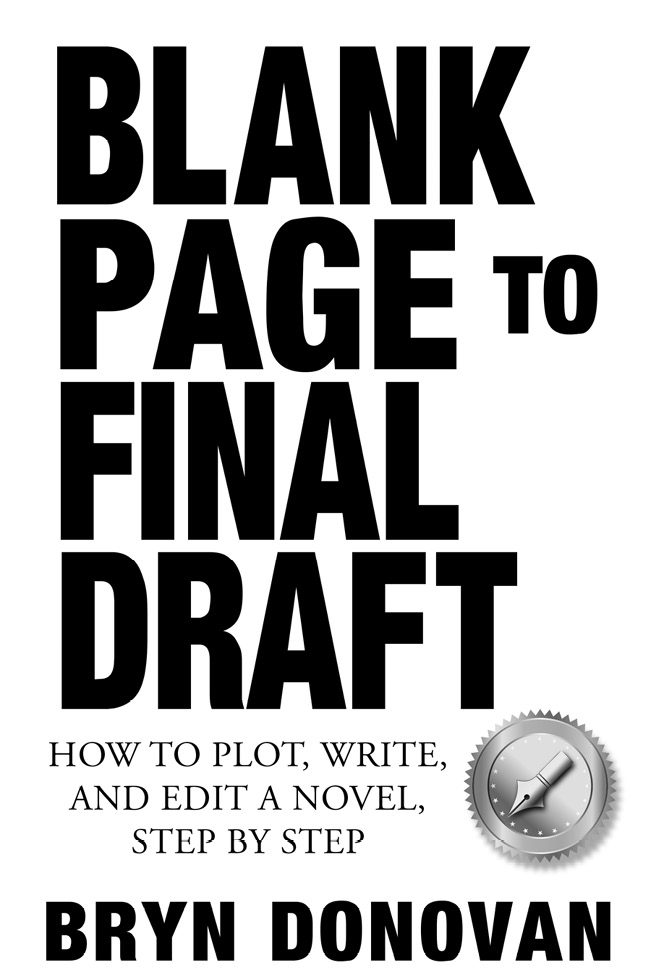
Blank Page to Final Draft
Copyright 2020 by Stacey Donovan
First edition, November 2020
Print: 978-1-951952-06-8
eBook: 978-0-9967152-9-4
All rights reserved. No part of this publication may be reproduced or distributed in print or electronic form without prior permission of the author.
For more writing resources and advice, visit bryndonovan.com.
For writing support, encouragement, author news, sales, and giveaways, sign up for the newsletter: https://bit.ly/2SrNjzS
INTRODUCTION
W elcome! Todays an exciting day. Youre starting to write a great new book. It might be your first one, or it might be your best one yet.
One year from todayor perhaps much sooneryou could be holding a new novel manuscript in your hands.
Take a minute to imagine it. Itll be a hefty stack of papermaybe 250, 300, 400 pages. Itll be finished, edited, and even proofread: ready to send to agents or publishers, or to publish yourself. Youll feel proud of your accomplishment.
Many of us dream of completing a novel, though few actually do it. Those of us who havent been able to complete one often blame ourselves for not having more inspiration or discipline. Or sometimes, we blame our circumstances, saying its impossible to finish a novel while going to school or holding down a full-time job.
But none of these things may be entirely to blame. Writing a book is a big, complicated project, and many of us dont have the framework or the structure we need.
Some of us have ideas, but we arent sure how to actually begin.
Some of us have been told, Just write! So we do. We get fifty or one hundred pages in, and then cant figure out what to do next.
And some of us write complete exuberant, messy rough drafts of novelsand then dont know how to edit them.
Because writing a novel is such a big project, many of us also arent sure how to fit it into our busy lives.
Even people who have already written several novels sometimes look for a more structured way to approach the work and balance it against their day jobs, their parenting, and all the other demands on their time.
How This Book Came About
Blank Page to Final Draft includes a schedule I made for myself after years of never finishing a draftand then finishing one that was such a hot mess, I didnt know what to do with it.
The first time I followed this schedule, I wrote and edited a book in exactly one year and got my first publishing contract. It was from a small publisher, but for me, it was a big deala dream come true. I followed the same process for two other novels: one I also wrote in a years time, and one I wrote in under six months.
Ive also written a couple of novels that I worked on intermittently over the course of a few years. So Im not saying this is the only way to write a novel, and anyone who says theres one perfect way to do it doesnt know what theyre talking about.
As an executive editor in publishing, Ive talked to a lot of people who are looking for a blueprint about how to plan a novel, structure their time, and reach their writing goals. Ive also noticed that many new authors make the same kinds of mistakesand I understand, because Ive made every single one of them in the past, myself.
This book does three things:
- It breaks down a daunting project into smaller, manageable steps.
- It addresses all kinds of common issues, questions, and pitfalls to help you improve both your story and your writing style.
- It gives you support and inspiration all throughout the process.
If you already have a completed manuscript, you can use section three as an editing guide. For many people, revising is the most confusing part! I break it down step by step so its not overwhelming.
If youve written novels in the past, but youve hit a low period in your author journeyor youre coming back to writing after not doing it for a long whileyou may worry that youve lost your spark. You havent. Creativity is never gone for good. This book can help that spark glow brighter again.
If youve never completed a polished novel before, you may have gotten discouraged. You may have even thought that if you could do it, you wouldve done it by now.
Forget all those negative thoughts. Thats the past. You can do this. You can start today.
How to Use This Book
The Regular Pace
If youre truly starting with a blank page and you want a finished, polished manuscript in your hands one year from now, do one step a week for the next year. Youll likely be able to balance this with a day job, a full-time school schedule, or family responsibilities (but if youre juggling more than one of the above, you may need to take longer.)
The Fast Pace
Do two steps a week instead of one step and have a completed, polished novel in six months time.
Your Pace
You may be a speed demon who can do several steps a week. There are no limits. Go as fast as you can!
Alternately, you may find that one year is way too fast for youbecause of your hectic life, your own creative process, a personal crisis, or other reasons. You might fall behind the one-step-a-week pace.
If this is your experience, youll be in great company.
As a writer, its easy to feel like youre too slow and that everybody else can write faster than you. The truth is, many people write slowly. You may have good reasons for it.
You may have a more complicated storyand if youre an epic fantasy, science fiction, or historical fiction author, you know all about this. And of course, may have a more complicated life. If you have a demanding day job, children at home, caregiving duties, or an illness, you face very real challenges, both in terms of time and energy. Big changes in your life, health concerns, and personal crises can all slow down your writing.
All that aside, you may have a more contemplative creative process, and theres nothing wrong with that. Sometimes this can lead to deeper insights and more memorable storytelling.
Give yourself a break and avoid comparing yourself to other writers. If you must compare, though, think about your favorite authors of all time. I bet at least some of them are not super-fast!
Unless a publisher has given you a deadline, your pace is your business, and no one else has the right to judge. Progress is progress, and as long as youre sticking with it and moving forward, you should feel great about yourself. Youre on your own path, and your own rewards are waiting for you.
The Checklist
At the end of each step in this book, Ive included a checklist of tasks. Doing all the tasks for each step will keep you on track.
The Best Time to Start May Be Now
Theres always a tendency to put off our biggest dreams.
Ill start this on January 1, you might say. Itll be my project for that year. Okay, if its the end of November and youre involved in six different holiday celebrations, thats probably sensible. But if its April or August, do you really want to wait that long? You might decide, Ill do this once things settle down at work. Are you sure they ever will?
You dont need to wait until youre absolutely sure of what youre doing. If everyone did that, we wouldnt have many books. You dont need to wait until youve got things planned out, because the whole first section is about planning.
If youre doing one step a week, you might want to start this coming Monday. I recommend diving in unless you have a good reason not tofor instance, if youre doing this with a friend or a group, which Ill talk about next.


